When most people hear the word hero, they likely picture someone who has saved a life. Perhaps it’s a military person who has valiantly fought for his country. Maybe it’s a firefighter who has saved people from a burning building. Or possibly it’s a nurse or doctor who has brought a patient back from the grips of death.
But there’s another kind of hero who deserves recognition. This person has also saved a life. That hero is a birth mother.
A birth mother is a woman who finds out she’s expecting a baby, but who, for whatever reason, decides she cannot raise that baby. So she gives a loving family the chance to adopt him. By doing this, the birth mother is making one of the most selfless choices anyone can make.
That is why a birth mother is and always will be a hero. She’ll be a hero to her child, who will feel loved and valued because his mother put his life first. She will be a hero to the adoptive family who was finally able to realize the dream of having a child. And she is a hero to other mothers experiencing surprise pregnancies, as they will feel buoyed by her strength and courage.
The Loving Option
Dealing with a surprise pregnancy can be scary, confusing, and extremely stressful. Once the new mom processes the fact that she’s carrying a baby, her head swirls with choices and fears. She may think:
- How can I do this? I feel so alone!
- I can’t afford to raise a baby.
- Should I have an abortion?
- Can I give him to a loving family?
While abortion is often a solution of desperation, adoption is the loving and heroic option. Yet, with the staggering statistics that over a million abortions are performed in the US every year, we know that the majority of women choose to abort.
Further, the US Adoption Network states: “There are no national statistics on how many people are waiting to adopt, but experts estimate it is somewhere between one and two million couples…. Only 4% of women with unwanted pregnancies place their children through adoption.”
Only about 4% of Unwanted Pregnancies End in Adoption
When you think about the number of couples who desperately want a child versus the number of babies killed in abortion, your heart breaks. There are so many loving families who would welcome a child, as a child is always a precious and amazing gift.
When a woman encounters a surprise pregnancy, she may think that an abortion is “easier” than carrying a baby and giving him to a family. And while it may seem like a “quick fix,” the emotional damage of aborting a baby is something many women never get past.
Project Rachel is an organization that helps both post-abortion women and men heal. An article on its site sheds light on the emotional trauma women often face after an abortion:
After the abortion she may feel numb, her grief over the death of her child being blunted by her strong ambivalent feelings—her tender feelings for her child, and the defensive denial of these feelings which enabled her to submit to the abortion procedure. She may continue in this emotional state for days, weeks, or even for many years. Societal expectations are that she feel relieved and grateful that “her problem is solved,” and in fact this is the answer she typically gives to surveys and polls. In reality, however, her inner life is often plagued by guilt and shame, nightmares of babies being sucked down tubes or dying in horrific accidents or violent crimes. She may seek medical treatment for insomnia and anxiety or medicate herself with alcohol and illicit drugs to ease her pain. As time goes on she may experience intrusive thoughts, day and night, and flashbacks to the abortion experience may be triggered by such ordinary experiences as a gynecological exam or the sound of the suction in a dentist’s office. She may become seriously depressed and even suicidal. Her affect is blunted, she feels numb.
Conversely, women who give their babies up for adoption claim to feel at peace with the decision. That doesn’t mean that they don’t feel sad. That doesn’t mean that they don’t miss their babies. But the knowledge that they have done one of the most selfless acts possible helps them as they learn to cope with the emotions that come with giving a baby up for adoption.
This quote from a mother who chose to give her baby to another family illustrates this feeling:
Even when I was a the hospital holding a brand-new baby in my arms, I knew that this was Chris and Lexie’s child, and that I had just given her the best possible start to life…. There’s still emotions that I feel, but it’s never regret or sadness. I know this was the best decision to make for me, and I’m really happy with the way everything’s turned out.
But questions swirl in their minds. Many have no idea how to even go about giving their baby up for adoption.
What’s Involved in the Adoption Process?
According to American Adoptions, the adoption of a baby can happen privately (i.e., not through the foster care system) in one of two ways: independent adoption or through an agency.
If the mother chooses to go the independent route, this means she has been personally contacted by the adoptive family. Maybe it’s by a friend of a friend, a neighbor, someone from church, etc. The couple and the woman work together privately—and then later with the help of an attorney to make it legal—to come to an agreement.
When a woman goes through an agency, however, the agency takes care of the entire process. It works with the mother to choose the right family. It pays her bills. And it helps in other ways, if necessary.
According to A Birthmother’s Choice:
You cannot get paid for an adoption. But you can receive financial help during the adoption process. This includes money for housing, utilities, food and medical bills. It might also include additional cash assistance for other expenses during the pregnancy. And in most situations, it will include money for a couple of months after the pregnancy.
We make sure that the pregnant women who do an adoption with us do not go hungry, that they have free housing and that their medical and utility bills are paid for with financial assistance.
Adoption agencies want to make it clear that the process will cost the birth mother no money.
Furthermore, understanding that it’s traumatic to give a baby away, organizations like American Adoptions will even pay for counseling for the birth mother after the adoption is final.
In addition, the birth mother has control over what kind of adoption she wants.
Adoption today is not like it was 30 – 40 years ago, where the baby is whisked away from the delivery room, and the mother wonders for years—or maybe forever—if that child is happy or healthy. She no longer has to speculate about his family and what kind of people are raising him.
Today, birth mothers can choose if they want an open or a closed adoption.
- In a closed adoption, the birth mother will have no contact with the adoptive family, nor will she receive any information about the child. Depending on the state, the records may be sealed until the child becomes an adult.
- In an open adoption, however, the birth mother can choose how much contact she wants. She can ask for letters and pictures from the family once a year. She can ask for periodic updates via text. She can connect with the family on social media and watch the child grow. Or she can even have some contact with the child and stay in touch via phone or video chat. The choice is hers!
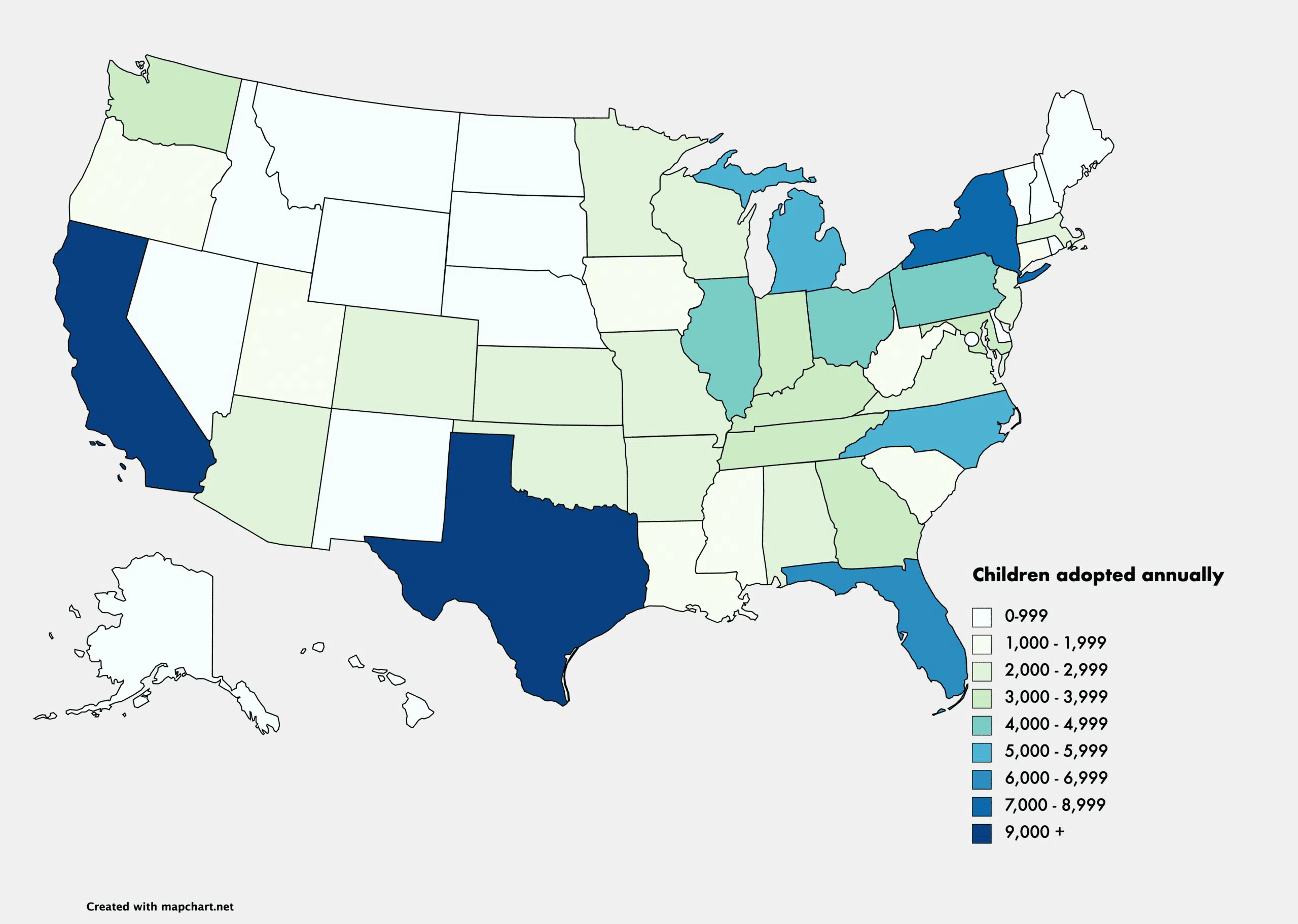
Annual adoptions by state (Source)
The Birth Mother Is in Control!
Once a birth mother has decided to give her baby up in adoption through an agency, she begins by creating an adoption plan. She discusses with the staff what kind of financial help she needs.
Then the staff will help her choose the kind of parents she wants for her baby. Agencies have compiled lists, so the birth mother can look through profiles of families to ensure that she picks the “perfect” one—one that matches her dreams for her child.
And finally, she can choose where and how she’ll have the baby.
After the birth mother chooses a family, if she so desires, she can meet with them, spend time with them, and even have them present at the baby’s birth. The birth mother is the one in control.
When a woman gives her baby for adoption, she is choosing life over death. She is putting his well-being over hers. And she is giving not only him, but another family, an immense gift.
Pro-life advocate Ryan Bomberger can attest to this fact. Ryan was conceived as a result of a rape, but his mother chose not to abort him. She gave him to a loving family. He was raised with 12 siblings, most of whom were also adopted. And because of his unique perspective on life, he created the Radiance Foundation—a life-affirming nonprofit that teaches the sanctity of all human beings, from creation until death. Ryan, who has two adopted children himself, speaks around the country. He writes about abortion, tells his adoption story, helps people understand the facts of abortion, and fights organizations like Planned Parenthood.
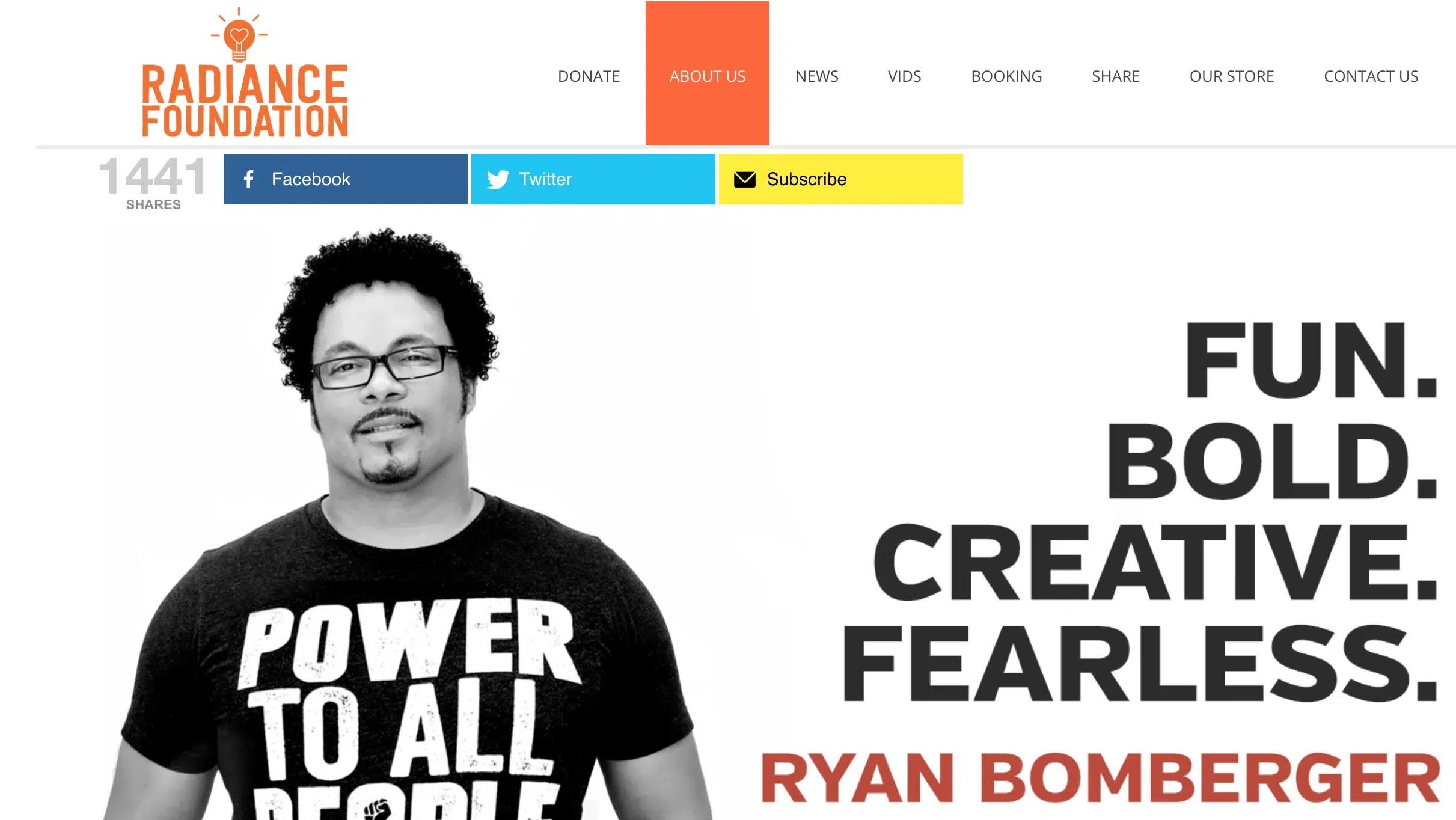
Ryan Bomberger (screenshot from the Radiance Foundation website)
His mother’s heroic actions have had a ripple effect and have created a hero. What a gift!
Final Thoughts on Adoption vs. Abortion
St. Ignatius Loyola once said: “God’s love calls us to move beyond fear. We ask God for the courage to abandon ourselves unreservedly, so that we might be molded by God’s grace, even as we cannot see where that path may lead us.”
The selfless act of carrying a child to term and giving him to a family who can care for him is a perfect example of what St. Ignatius meant. A woman who lives those nine months not for herself but for her child is abandoning herself for the good of someone else. And the graces she receives will be immense.
The birth mother who comes to the crossroads of abortion and adoption and who chooses life is making a heroic decision—one her children will thank her for someday, for when they think of the word hero, they will not think of a fireman, a military man, or even Superman. They will think of their biological mother—the woman who gave them life.
As Ryan Bomberger states about his birth mother:
She probably never realized the incredible wave of events that her singular choice kind of set off, making the plan for adoption, allowing me to be loved like crazy by my family, and of course now today I’m also an adoptive father with four children. And so that’s pretty much how my life began … immersed in love, immersed in the understanding of a God that makes the impossible happen every single day.
Immersion in love: that is what adoption gives a child. And that is why the birth mother is such an extraordinary hero.
Related Content
Susan Ciancio has a BA in psychology and a BA in sociology from the University of Notre Dame, with an MA in liberal studies from Indiana University. Since 2003, she has worked as a professional editor and writer, editing both fiction and nonfiction books, magazine articles, blogs, educational lessons, professional materials, and website content. Fourteen of those years have been in the pro-life sector. Currently Susan writes weekly for HLI, edits for American Life League, and is the editor of its Celebrate Life Magazine. She also serves as executive editor for the Culture of Life Studies Program, an educational nonprofit program for k-12 students.


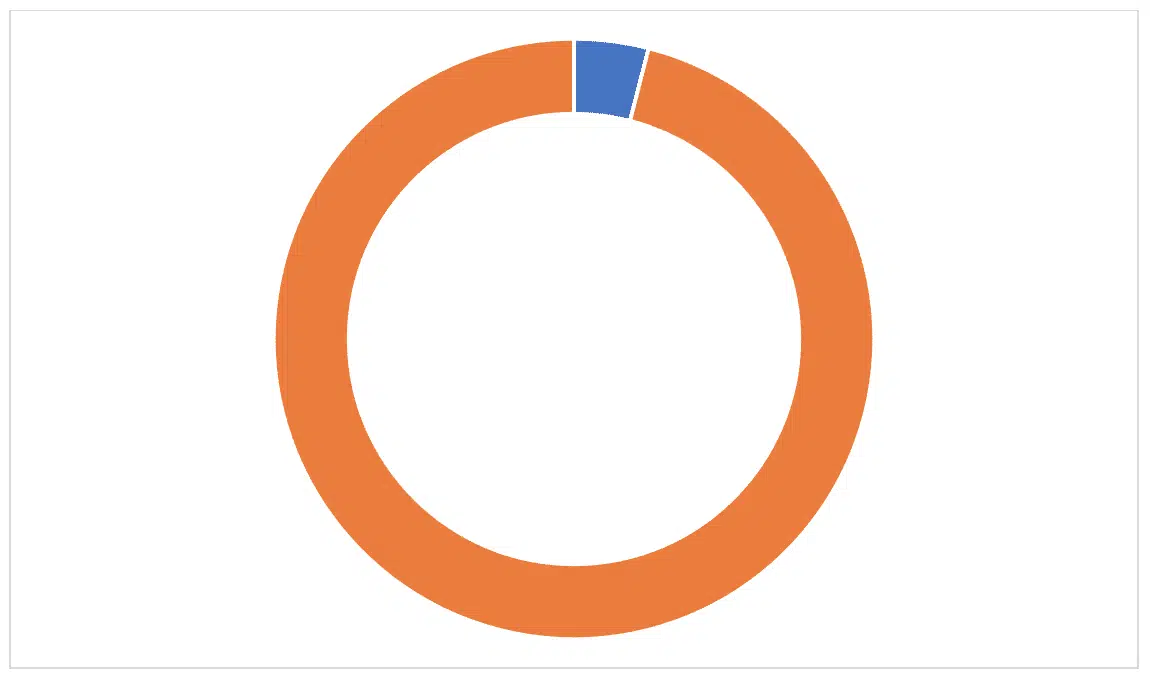
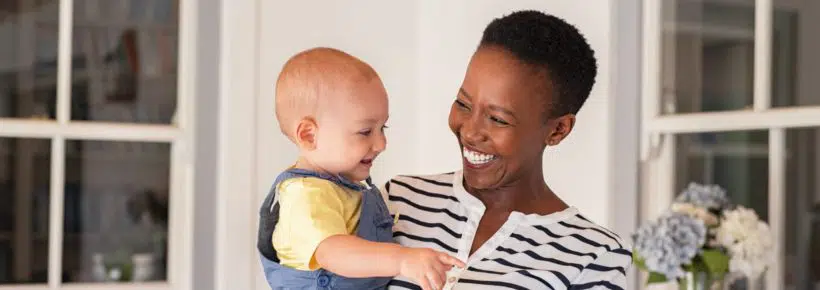
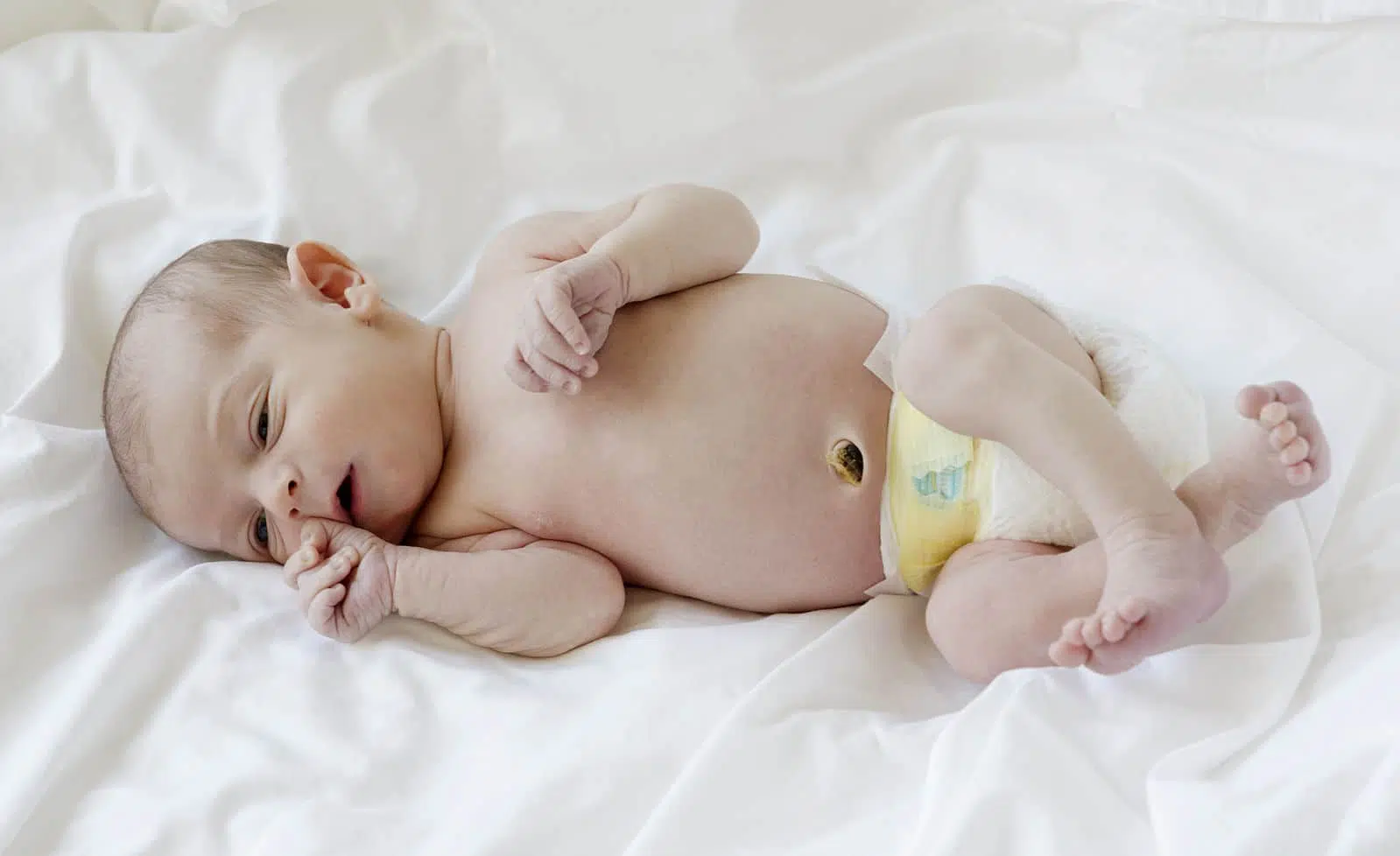

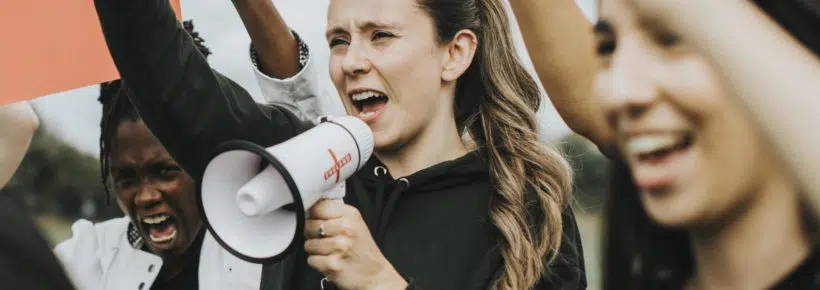

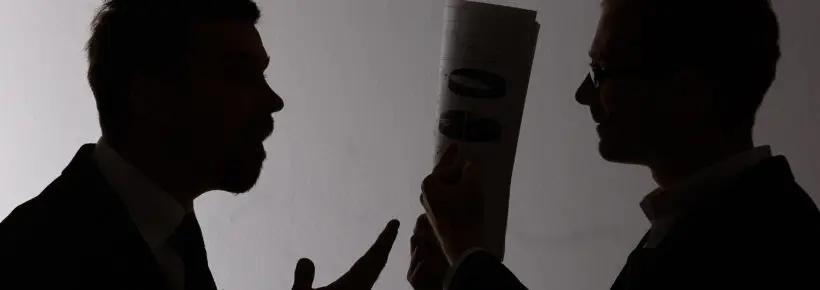
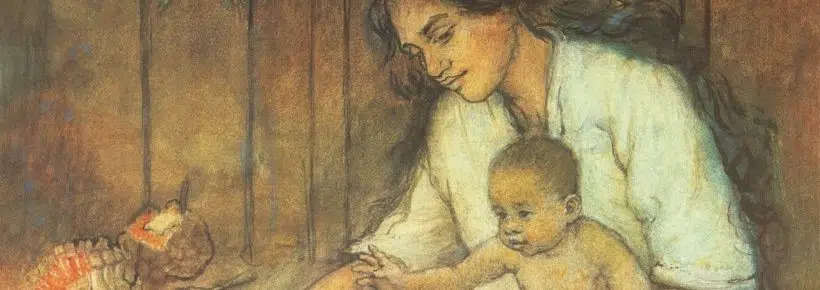


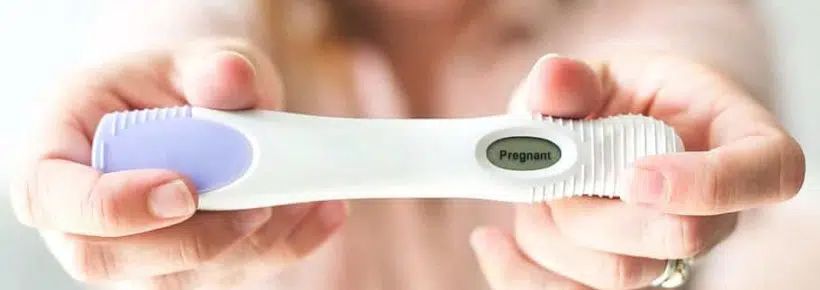


Coercion is not the issue. The issue is life (birth) or death (abortion). As a person whom had an abortion and also a birth mom, birth mom is what is best for “us”. The aborted have not taken part in the “us”, it is a false statement. Ask anyone alive today if they felt they could have taken part in the “us” discussion/decision. The time of my abortion I had support but the support received was overwhelming to abort, being coerced and convince that I was making the best choice for “us”. Sadly I should have asked my unborn baby what they would choose, but instead I listened to the father, society and friends, whom all stated in many ways how the “problem” would go away with an abortion. Years, years later the “problem” is with me and has always been with me and will be with me until I pass away. It’s a painful distraught unbearable heartache that never leaves me. If only I had decided to place my innocent unborn child for adoption (in order to solve my “problem”), my unborn child would be alive and maybe tell the same story as Ryan Bomberger…or at least have life that they were never given a chance to have. Who made us GOD to choose and not to choose whom has life. There is no reason and hopefully soon this support for abortion will end. We women don’t have to end life because we have a problem.
We need to have more programs to convince women to give up their babies for adoption rather than abort them.
That’s called coercion, sir. Coercion leads to even more heartache and regret by the many birth moms I know that felt unsupported to parent, and thus forced to place their children in adoption plans. Does there need to be more education on the benefits of adoption? Yes. Does there need to be a lot more post-placement support for moms who do choose adoption and healing from the grief it causes, YES. But “convince women” to choose adoption….no. As a birth mom, I made my choice with education and support, and have peace because I had that support of whatever I decided was best for us. It wasn’t convincing me, it was my choice. There is a difference of education to empower her to make decisions with facts, verses convincing.